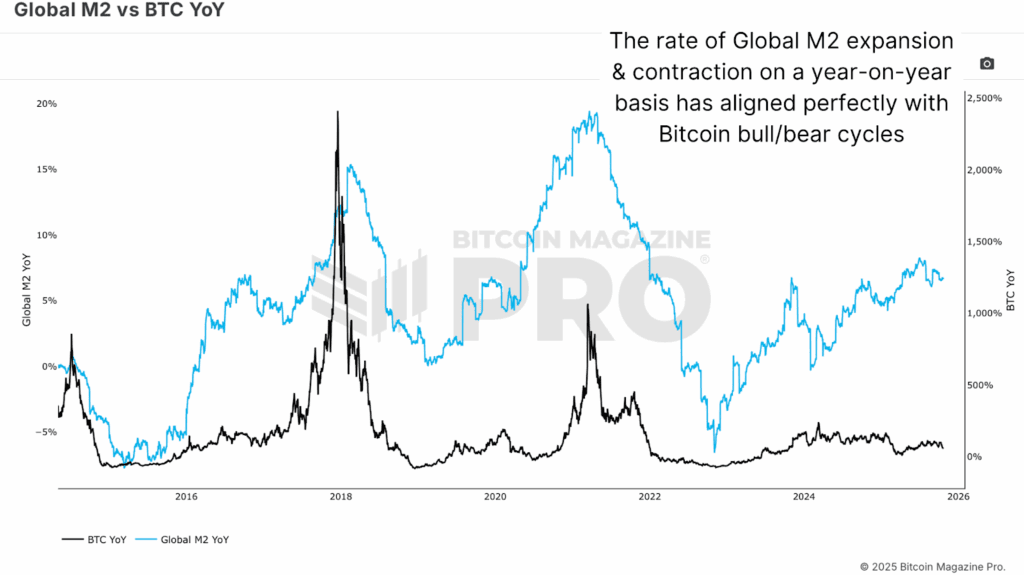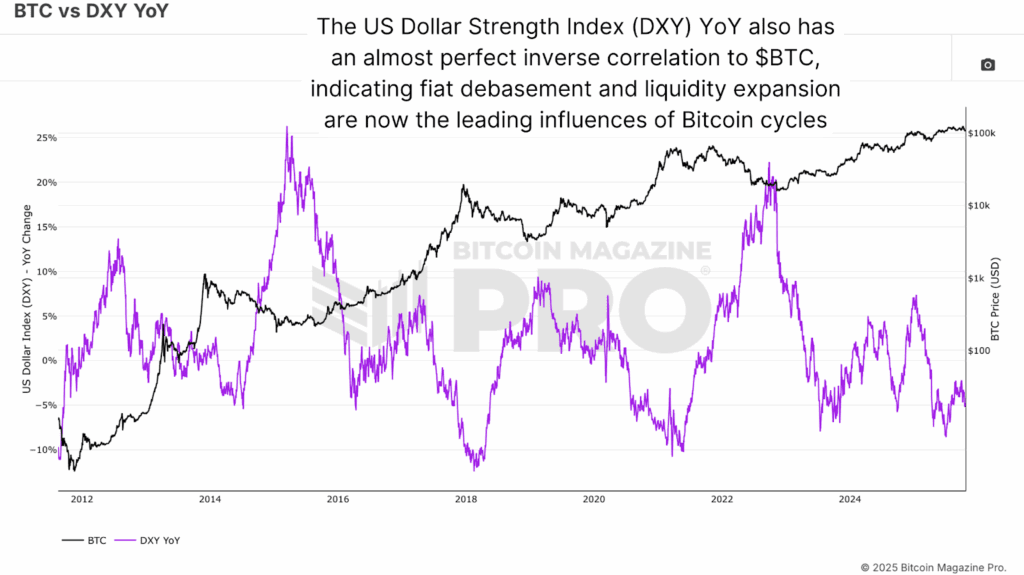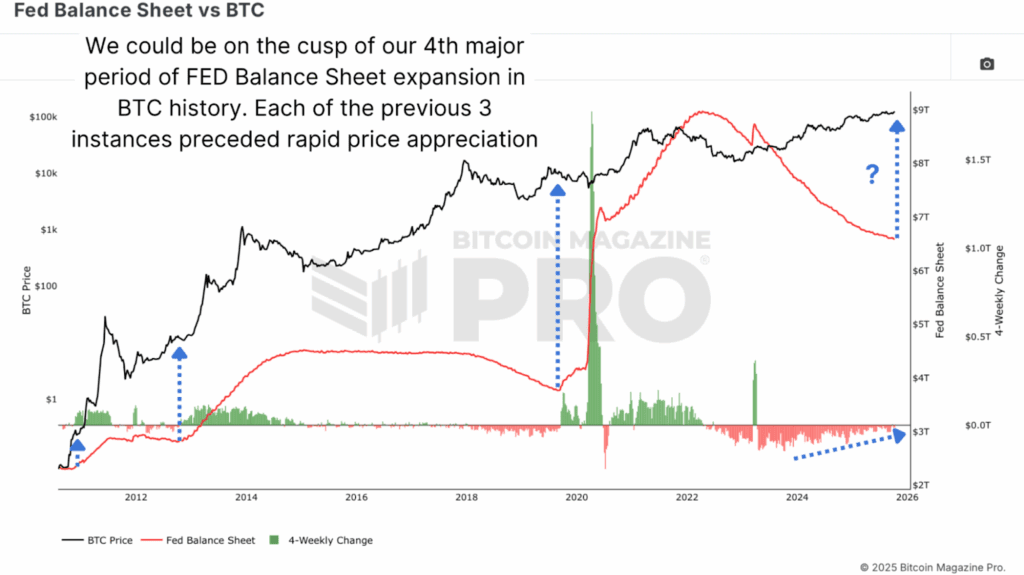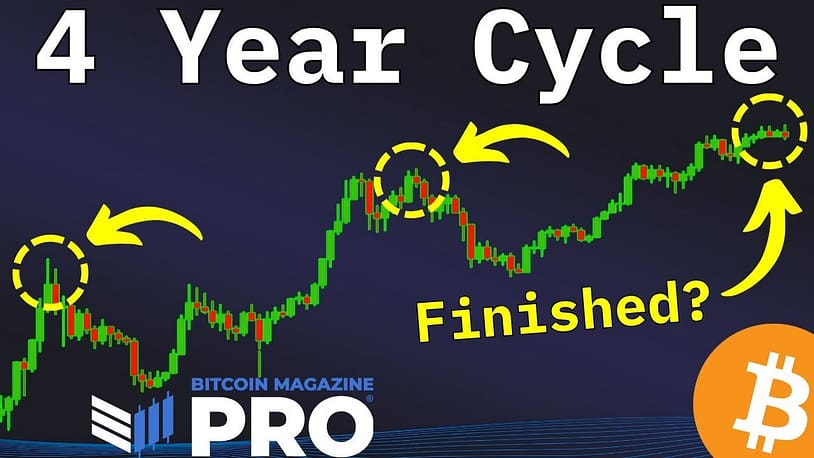Has the bitcoin price lastly damaged away from its four-year cycle sample, or is that this bull market already coming into exhaustion? By learning historic development charges, liquidity knowledge, and macroeconomic correlations, we are able to higher perceive whether or not the present cycle has actually diverged, and what meaning for traders within the months forward.
Bitcoin Value Cycle Period
Analyzing BTC Growth Since Cycle Lows, we are able to see that Bitcoin has now formally surpassed the elapsed time from cycle low to cycle excessive seen in earlier bull markets. The 2018–2022 cycle peaked 1,059 days after its prior bear market low, and the present cycle has now moved past that length. If we common the elapsed time throughout the final two full market cycles, Bitcoin has already exceeded the historic imply and is on the verge of surpassing even the 2017 cycle size within the coming days.
Diminishing Influence on Bitcoin Value
Traditionally, Bitcoin’s four-year cycle was rooted in its halving occasions, the place the block reward, and thus the inflation price, was reduce in half. Every halving triggered a pointy provide shock, driving main bull markets. Nonetheless, this cycle has behaved otherwise. Following the newest halving, Bitcoin skilled 5 months of sideways consolidation somewhat than the explosive post-halving rallies seen beforehand. Whereas value has since made notable features, momentum has been weaker, main many to ask whether or not the halving has misplaced its affect.

With the present Circulating Supply already exceeding 95% of the 21 million final complete provide of Bitcoin, the marginal provide discount could now not be as vital. As we speak, miners distribute roughly 450 newly created BTC per day, an quantity simply absorbed by a handful of institutional consumers or ETFs. Meaning the halving alone could now not be the dominant driver of Bitcoin’s market cycles.
International Liquidity Cycles Driving the Bitcoin Value
After we view Global M2 Money Supply versus BTC on a year-on-year foundation, a transparent sample emerges. Every main Bitcoin backside has aligned nearly completely with the trough of International M2 liquidity development.

If we map the Bitcoin halvings and the M2 troughs facet by facet, we see that halvings usually lag the liquidity cycle, suggesting that liquidity growth, not halving occasions, could be the true catalyst for Bitcoin’s rallies. This isn’t distinctive to Bitcoin. Gold has proven the identical habits for many years, with its value efficiency carefully mirroring the speed of International M2 growth or contraction.
Inverse Correlations Shaping Bitcoin Value Traits
A key a part of this liquidity story lies within the U.S. Greenback Power Index (DXY). Traditionally, BTC versus DXY on a year-on-year foundation has been nearly completely inversely correlated. When the greenback strengthens year-on-year, Bitcoin tends to enter bear market situations. When the greenback weakens, Bitcoin begins a brand new bull market. This inverse relationship additionally holds true for Gold and fairness markets, underscoring the broader debasement cycle thesis that as fiat currencies lose buying energy, onerous property quickly admire.

At present, the DXY has been in a short-term uptrend, coinciding with Bitcoin’s latest consolidation. Nonetheless, the index is now approaching a key historic resistance zone, one which has beforehand marked main turning factors and preceded extended DXY declines. If this sample holds, the following main drop in greenback energy may set off a renewed upcycle for Bitcoin.
Quantitative Tightening and the Bitcoin Value
Comments from Federal Reserve Chair Jerome Powell just lately hinted that the period of stability sheet contraction (quantitative tightening) could also be nearing an finish. Trying on the Fed Balance Sheet versus BTC, the beginning of stability sheet growth and renewed quantitative easing has traditionally coincided with main upward strikes in Bitcoin and fairness markets alike.

Throughout the two years following earlier Fed stability sheet expansions, the S&P 500 averaged a 47% return, greater than 5 occasions the typical two-year efficiency throughout impartial intervals. If we’re certainly coming into a brand new easing section, it couldn’t solely delay Bitcoin’s present cycle but in addition set the stage for a liquidity-driven melt-up throughout threat property.
Conclusion: The Evolving Bitcoin Value Cycle
Bitcoin has now outlasted the timeframes of its earlier two cycles, main many to query whether or not the four-year rhythm nonetheless applies. However once we step again, a unique narrative emerges, one pushed not by programmed shortage, however by International liquidity, fiat debasement, and macro capital circulate. The “four-year cycle” will not be damaged, however it might have merely advanced.
If the U.S. Greenback weakens, the Fed pauses tightening, and International M2 development accelerates, then Bitcoin probably nonetheless has room to run. For now, as at all times, one of the best strategy stays the identical: react, don’t predict. Keep data-driven, keep affected person, and maintain your eyes on liquidity.
For a extra in-depth look into this matter, watch our most up-to-date YouTube video right here: Where Are We In This Bitcoin Cycle
For deeper knowledge, charts, {and professional} insights into bitcoin value developments, go to BitcoinMagazinePro.com.
Subscribe to Bitcoin Magazine Pro on YouTube for extra skilled market insights and evaluation!

Disclaimer: This text is for informational functions solely and shouldn’t be thought-about monetary recommendation. At all times do your personal analysis earlier than making any funding selections.
